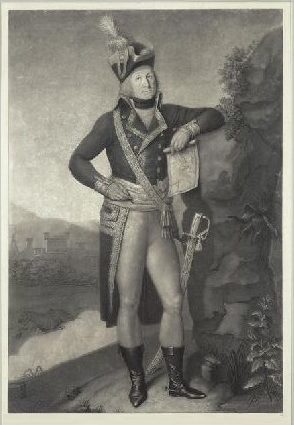History Behind the Book, Part 2: La Legion Noire and the French Expedition
- michellebennington
- Oct 3, 2023
- 4 min read
Updated: Nov 10, 2023


In my last post I discussed the Irish alliance with the French in order to reinforce their arms against the British Crown in the Irish fight for independence, led by The Society of United Irishmen, which was founded by Theobald Wolfe Tone.

Tone was a barrister in Dublin who was responsible for negotiating the alliance with France. Tone foretold a coming revolution in Ireland and the information was confirmed by Lord Edward FitzGerald, an Irish aristocrat and nationalist supporting Irish independence, and Arthur O'Connor, an Irish politician fervently canvassing support for the Irish in England and France. Upon confirmation of that information, the French Directory planned a military landing in Ireland under the command of Louis Lazare Hoche. It was was known as the French expedition to Ireland or Expédition d'Irlande. It was the first, but not the last of its kind.

During this expedition, General Hoche created a unit of the French Revolutionary Army called La Légion Noire. The group was comprised of 46 officers and 1178 troops. Many of the Legion were prisoners and convicts who had been drafted or "pressed" against their will. At some point, I'll need to write a blog about Press Gangs, since that's also mentioned in Widow's Blush. Likely, some of the pressed men were British and would've been forced to fight against their own country.
Interestingly, the Legion's equipment came from British army material, weapons, and uniforms captured at the unsuccessful Franco-British landings at Quiberon in 1795. The red British uniforms were dyed a brown / black color, which inspired the unit's name.
The main purpose of The Legion was to divert British attention. They would target Liverpool (which later changed to Bristol) to harness British military attention and resources while the French landed, unnoticed, at Bantry Bay on Ireland's West Coast. Another force, La Legion des Francs were then going to attack Newcastle upon Tyne to destroy local shipping.
The Legion set out from Dunkirk in November of 1796, but turned back at Flushing, the Netherlands, after bad weather caused the loss of several barges. Once back in port, many of the soldiers who had been pressed convicts refused to re-embark. The campaign was abandoned and Tone, The United Irish, and their French allies were sent back to the drawing board.
Not to be gainsaid, Tone and his allies tried again. On December 15, 1796, the expedition, consisting of forty-three ships and 14,450 soldiers, sailed from Brest and carried a large supply of war material to distribute in Ireland. Tone accompanied the expedition as "Adjutant-general Smith." Tone grew frustrated, however, when gale-force winds prevented the ships from landing immediately and waited several days off the coast of Bantry Bay. But the winds didn't let up, so they had to return to France.
Tone continued to serve in the French army under Hoche, who had become the French
Republic's minister of war after he defeated the Austrians at the Battle of Neuwied in April 1797. This was simply a delay in Tone's plans to continue with rebellion. He tried again in June 1797 as he collaborated in preparations for another expedition to Ireland from the Batavian Republic. Yet, the weather again delayed the plans when unfavorable easterly winds delayed the Dutch Vice-Admiral Jan de Winter in the harbor of Texel island. After many days, the troops were disembarked and the plan abandoned.

Third time was not the charm for Tone. They tried again in October and attempted to reach Brest from Texel to reunite with the French fleet. However, the Dutch were intercepted by a British fleet in a North-Sea blockade on October 11 at the Battle of Camperdown. Tone returned to Paris and General Hoche, died of tuberculosis after returning to his command on the Rhine.
Meanwhile, in Ireland, the United Irish membership had reached 300,000, which was about 6% of the population. However, as we know from my last blog, a fierce counter-insurgency led by the government forced leadership to launch a rising without French aid. But the rebels were facing opposition from Rome as well. Ireland is largely Roman Catholic and the Roman Catholic hierarchy was completely opposed to the United Irish as they were allied to the French who had just invaded Rome and set up the anti-clerical "Roman Republic."
In May 1798, the Irish revolted again, which put pressure on the French to assist. However, the French government had spent considerable wealth and resources in Bonaparte's Egyptian campaign. Therefore, they weren't able to help right away. Instead, they planned to create and launch three separate forces when the troops and resources became available.
Eventually, the Irish received General Humbert (left), General Hardy (right), General Kilmaine (bottom), a total of about 10,000 soldiers, and extra arms and supplies from
France. I won't go into the details of the battles and campaigns at this time, but as I stipulated in the last blog, the Franco-Irish alliance and the Irish rebellion ultimately failed and the British government came down harder on the rebels and made Ireland part of The Crown in 1801.
During my research for my book, Widow's Blush, I came across a mention of La Légion Noire. I was so fascinated by the idea of the campaign that I decided to create a parallel, all-female, underground network dedicated to toppling England from within as it struggles to negotiate peace with France.


_edited.jpg)













